Smithsonian to Return Looted Collection of Benin Bronzes to Nigeria
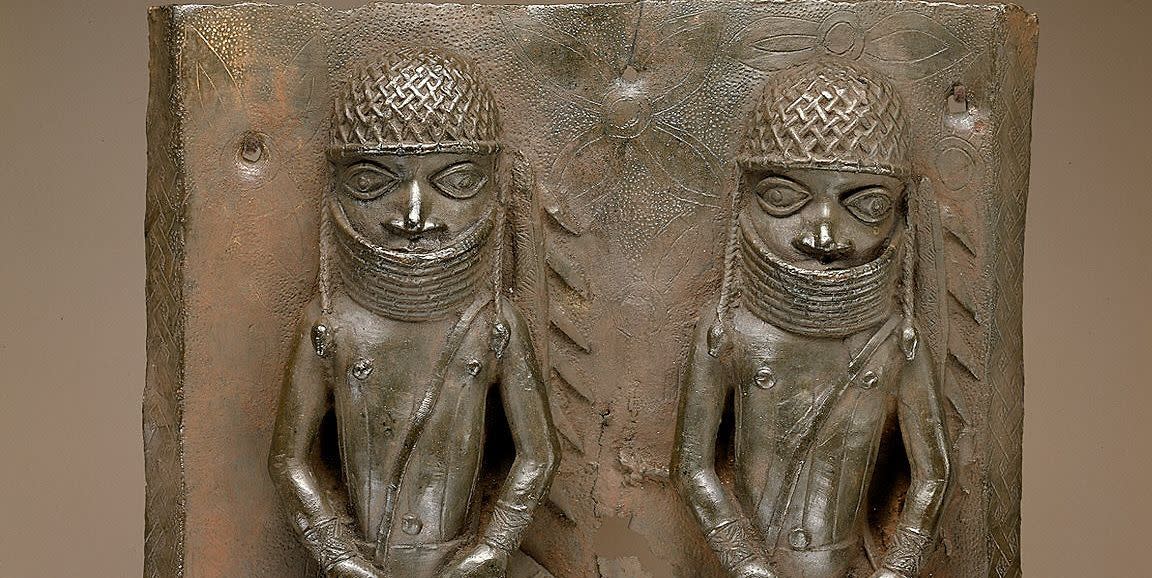
Update, 6/16/22: The Smithsonian Institution voted to repatriate 29 of its 39 Benin bronzes to Nigeria, and plans to return to Nigeria’s National Commission for Museums and Monuments "at a later date." It's as yet unclear what the institution plans to do with the remaining 10 bronzes.
Original, 3/9/22: The Smithsonian Institution said on Tuesday they planned to return most of its collection of Benin Bronzes. The decision to repatriate the artwork comes after the Smithsonian’s new policy of ethical returns, which created guidelines to apply to the Institution's more than 155 million objects. Benin City has been advocating for the return of its treasures for decades.
In July, 18 Benin Bronzes were already removed from their cases at the Smithsonian’s National Museum of African Art. Director Ngaire Blankenberg told the Washington Post, "I have a visceral reaction to seeing things that shouldn’t be on display. I wanted to make sure that negative reaction wasn’t being felt by anyone else."
The looted pieces were subsequently replaced by photographs and a sign that reads in part: “We recognize the trauma, violence and loss such displays of stolen artistic and cultural heritage can inflict on the victims of those crimes, their descendants, and broader communities.”
Now, the Smithsonian has agreed to return the collection to Nigeria. Once they arrive in Nigeria, they will be displayed at the National Museum of Benin in Benin City. The final details of the agreement are still being worked out.
"This is about a new possibility. The repatriation is about past violence and harm,” Blankenberg said. "I don’t believe it ends there. We have to stop the harm and imagine a new way of working, of how we can do this differently together."
Many of the 39 pieces of art are linked to a British raid on Benin City in 1897. As the Smithsonian's website explains, during the raid, "the British confiscated all of the royal treasures, giving some to individual officers but taking most to auction in London to pay for the cost of the expedition. The looted objects eventually made their way into museum and private collections around the world."
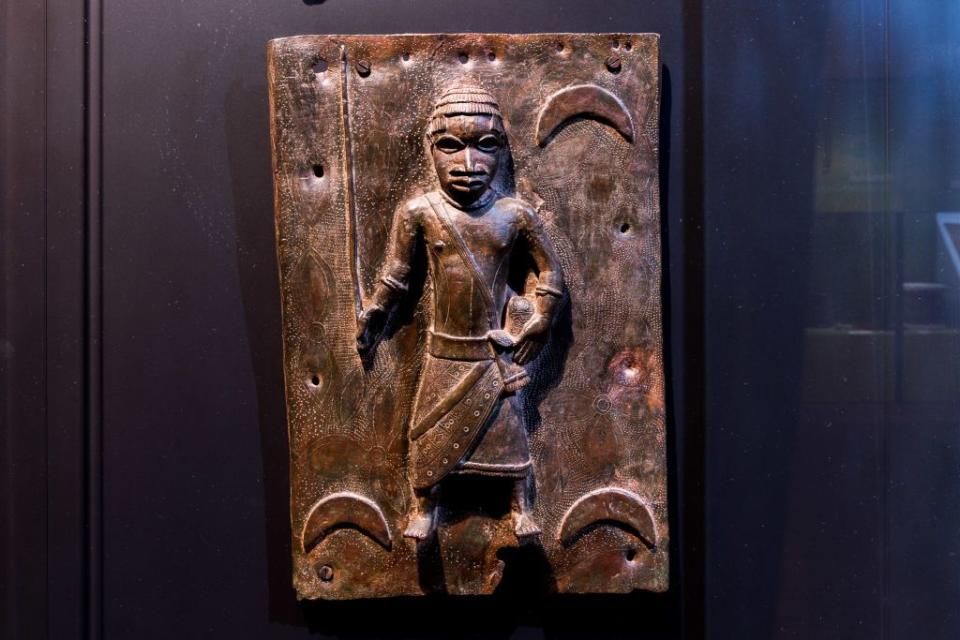
The Smithsonian is not the first museum to repatriate art to Benin. In March 2021, the University of Aberdeen became the first cultural institution to repatriate Benin Bronzes when it announced it would send back its sole Benin Bronze. In April 2021, Germany promised to begin returning the Benin Bronzes held by state-run institutions this year. In June 2021, the Met, which has some 160 items from Benin City, returned two Benin Bronzes to Nigeria.
In November 2021, France, too, returned looted artwork to Benin, agreeing to return 26 pieces of art, including the 19th century Throne of Benin's King Ghezo. French President Emmanuel Macron promised to "return African heritage to Africa" in 2017 during his visit to Burkina Faso.
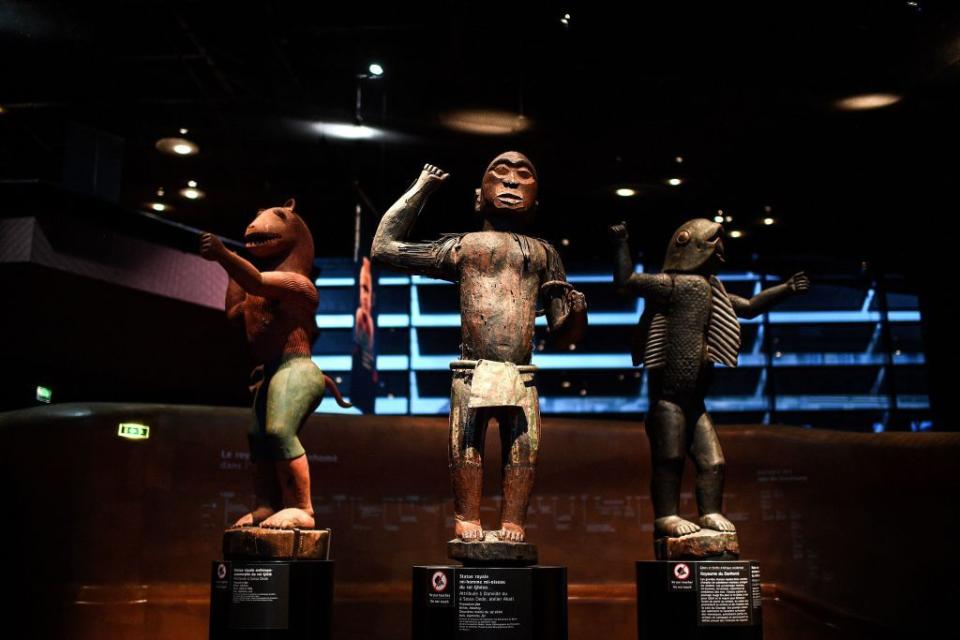
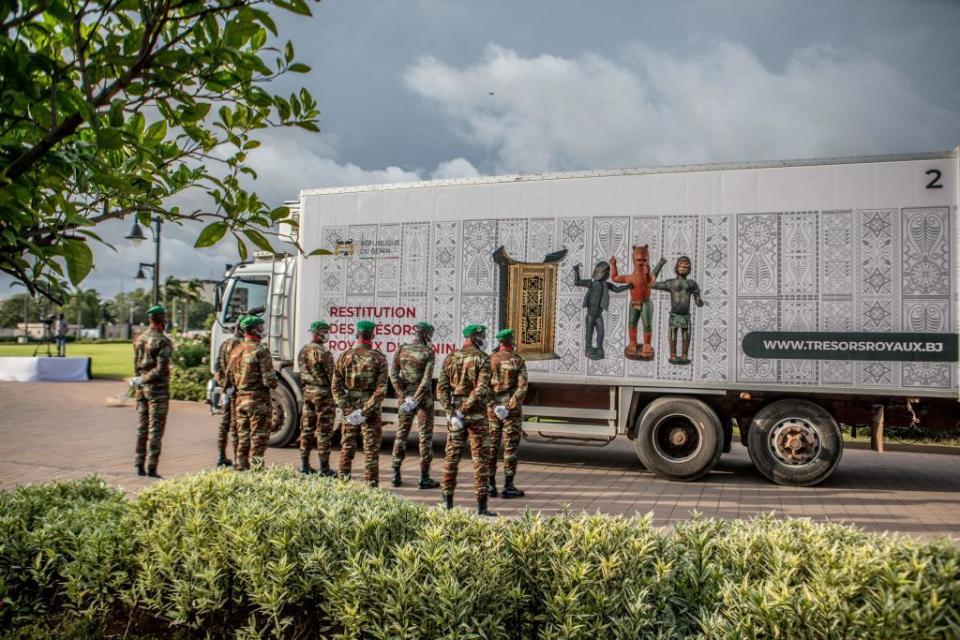
At the return of the University of Aberdeen’s Benin Bronze, Benin's King, Omo N'Oba N'Edo Uku Akpolokpolo Ewuare II, said: "Much has been said about the significance of heritage art and, in spite of the occasional attempts in some quarters to downplay their cultural and religious relevance, these works are often imbued with the spirit of the people from whom they were taken."
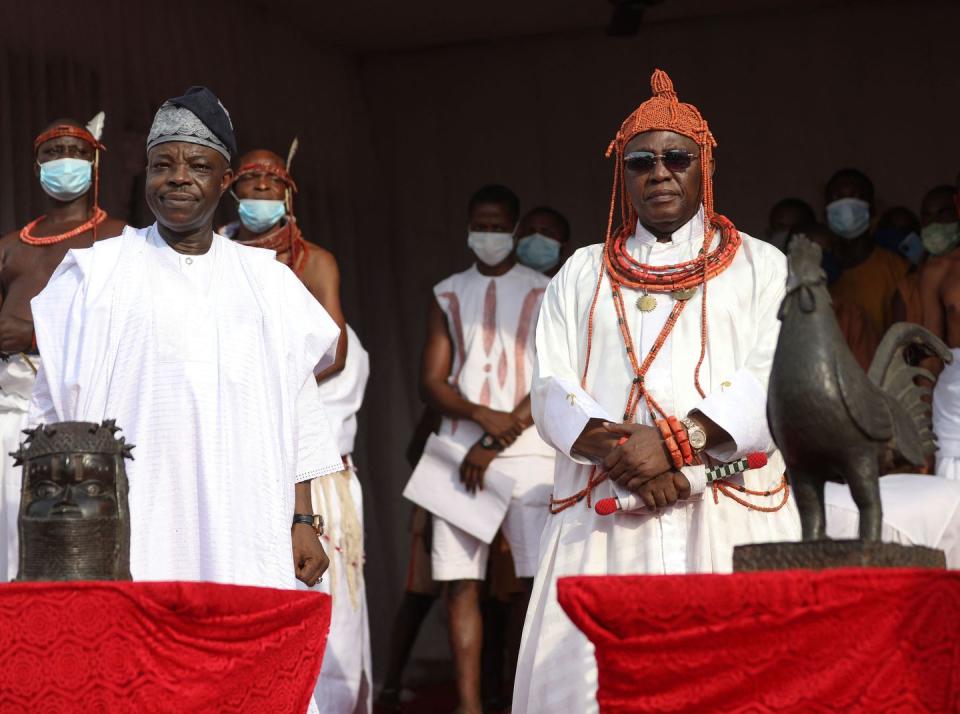
The King added, "We hope that other institutions worldwide will see the injustice when they insist on holding on to items which in fact should be a reminder to them of the great injustice that was inflicted on a people so far away and so long ago."
You Might Also Like

